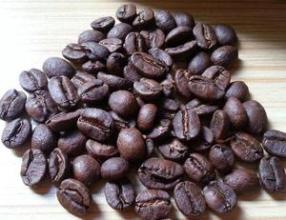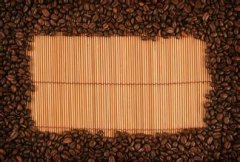A brief introduction to the treatment method of grinding degree and baking degree of Kenyan boutique coffee beans

This coffee has an excellent medium purity, crisp and refreshing taste. Fresh flavor and best for iced coffee in summer. When tasting this coffee, if it is accompanied by fruit with acidity such as grapefruit, it will definitely give me the best coffee experience. "Less coffee, more fruit tea" is the common feeling many people have about this light roasted Kenyan coffee. In addition to the obvious and fascinating fruit acidity, Kenya coffee is mostly grown by small coffee farmers in a variety of environments, and each year encounters different climates and rainfall, bringing a variety of distinct and unique personalities. There are two types of coffee farms in Kenya. One is a large plantation covering more than five acres, but the average elevation is lower. As far as Kenya coffee is concerned, the coffee beans of large farms are only of medium quality. The best Kenyan beans are produced in small farms, mostly located in the foothills or hillsides above 5,000 or 6,000 feet. Each small farmer can only produce about 20 to 70 bags per season. They cannot afford to invest in expensive washing and treatment plants. However, small farmers are very united. Hundreds or thousands of families set up cooperative farms. The washing and treatment plants are funded by the government. The coffee fruits picked by small farmers are sent to cooperative farms for unified processing. First, the half-ripe or rotten fruits are removed, and then peeled, fermented, The process of breaking down the pulp, removing the beans, drying and polishing is supervised by the official Coffee Authority, which is quite rigorous and ensures the quality of Kenyan coffee. Kenya beans washing processing technology and high standards of quality pipe, has been the example of bean producing countries know how to brew, but do not know how to taste coffee, then the original taste may become tasteless at all. Some taste coffee is to use the tongue to feel the taste, and some enjoy the kind of aromatic alcohol in the mouth, in addition to this, but also depends on the body when drinking coffee, the surrounding atmosphere and so on. In short, coffee tasting is a very delicate matter.
When drinking coffee in a poor coffee shop, sometimes you will drink nearly half cold coffee. No matter how good the quality of coffee beans is, and how good the brewing skills are, you will lose your appetite for coffee. "Drink hot" is a necessary condition for tasting delicious coffee, even if it is hot coffee in the summer. When coffee is cold, the flavor will be reduced, so when brewing coffee, in order not to reduce the taste of coffee, the coffee cup should be soaked in boiling water in advance. The appropriate temperature of coffee is 83 degrees Celsius at the moment of brewing, 80 degrees Celsius when poured into the cup, and 61-62 degrees Celsius when it reaches the mouth.
Kenya's northern neighbor is Ethiopia, where the Arabica coffee tree originated, but it was not until the early twentieth century that coffee cultivation began. In the 19th century, missionaries introduced Arabica trees from Yemen, but did not plant them in large quantities. It was not until 1893 that they introduced the ancient Brazilian bourbon coffee seeds to cultivate coffee on a large scale. In other words, Kenyan coffee has Brazilian ancestry. Due to differences in water, climate and processing methods, Kenyan beans have a completely different flavor from Brazilian beans. Brazilian coffee is grown at low altitudes, with soft texture and no obvious fruit acid flavor. Kenyan coffee trees, on the other hand, are concentrated on the slopes near Mount Kenya, between 4,000 feet and 6,500 feet above sea level, which is suitable for coffee bean flavor development, because the mountain temperature is lower, the growth is slower, the aromatic components of coffee beans are fully developed, the fruit acid flavor is more obvious, and the texture is harder. In addition, Kenya was a British colony in the early days, and the British have established a complete system of cultivation and quality control. After independence, Kenya's coffee industry grew from an established base
Kenya coffee is mostly grown at altitudes of 1500- 2100 meters and harvested twice a year. To make sure only ripe berries are picked, people have to make about seven rounds through the woods. Kenyan coffee is grown by smallholders who harvest the coffee and send it fresh to a cooperative washing station, which sends the washed and dried coffee to the cooperative in the state of "parchment beans"(i.e. beans covered with an endocarp)("parchment beans" are the final state of the beans before peeling). All the coffee is collected together and the grower charges an average price based on its actual quality. This method of buying and selling generally works well and is fair to both growers and consumers. Internationally, Kenya's coffee production has grown dramatically, from 800,000 bags exported in 1969- 1970 to 2 million bags in 1985-1986. The average yield is stable at 1.6 million bags, with an average yield of about 650 kg/ha. Even before the coffee price spike, the average price of coffee in Kenya had been rising. 1993--1994 Prices are 50% higher in 2010 than they were 12 months ago. Price increases are mainly the result of increased demand.
Some buyers, especially Japanese ones, have complained about Kenya's coffee system. Some traders say the quality of coffee in the country has declined, pointing out that buying directly from farmers may be one way to improve quality. Either way, kenya's detailed rules and procedures are a model for all coffee-producing countries.
Kenyan coffee gained further fame with the Hollywood blockbuster Out of Africa.
In the film Merrill. Mary Streep plays Karen, a writer and coffee plantation owner. Many people probably remember the breathtaking views and magnificent sunsets from the film, but even more memorable is Karen's dream of owning a coffee plantation in Africa
Kenya has a total population of 41.8 million (2013) and a population growth rate of 2.7%. There are 42 ethnic groups in the country, mainly Kikuyu (17 per cent), Luhia (14 per cent), Kalenjin (13 per cent), Luo (10 per cent) and Kamba (10 per cent). In addition, there are a small number of Indians, Arabs and Europeans coastal plains, most of the rest of the plateau with an average altitude of 1500 meters. the Great Rift Valley
The east branch cuts the plateau vertically from north to south, dividing the plateau into east and west parts. The valley floor of the Great Rift Valley is 450-1000 meters below the plateau and 50-100 kilometers wide. There are lakes of varying depths and many volcanoes. The northern part is desert and semi-desert zone, accounting for about 56% of the total area of the country. Mount Kenya in the central highlands is 5199 meters above sea level, the highest peak and the second highest peak in Africa, with snow on its summit all year round. Wagagai extinct volcano 4321 meters above sea level is located in the tropical monsoon zone, most of the region belongs to tropical savanna climate, humid coastal areas, mild plateau climate. 3-6 The rainy season is from October to December, and the rest is dry season. Annual rainfall decreases from 1500 mm to 200 mm from southwest to northeast. The capital Nairobi has a mild climate with an average annual temperature of 17.7°C and annual rainfall of 1049 mm. Kenya's flag is based on the flag of the pre-independence Kenya African National Union.
designed. It is rectangular in shape and has a ratio of length to width of 3:2. From top to bottom by black, red, green three parallel equal horizontal rectangle composition, red rectangle up and down each has a white edge. The central design of the flag is a shield and two crossed spears. Black symbolizes Kenyan people, red symbolizes struggle for freedom, green symbolizes agriculture and natural resources, white symbolizes unity and peace; spear and shield symbolize unity of the motherland and struggle for freedom
It entered Kenya in the 19th century, when Ethiopian coffee drinks were imported to Kenya via South Yemen. But it wasn't until the early 20th century that bourbon coffee trees were grown by St. Austin Mission introduced.
Kenya coffee is mostly grown at altitudes of 1500- 2100 meters and harvested twice a year. To make sure only ripe berries are picked, people have to make about seven rounds through the woods. Kenyan coffee is grown by smallholders who harvest the coffee and send it fresh to a cooperative washing station, which sends the washed and dried coffee to the cooperative in the state of "parchment beans"(i.e. beans covered with an endocarp)("parchment beans" are the final state of the beans before peeling). All the coffee is collected together and the grower charges an average price based on its actual quality. This method of buying and selling generally works well and is fair to both growers and consumers. Aromatic, rich, fruity, rich and perfect in taste. Kenya coffee has a wonderful fruity flavor, with a blackberry and grapefruit flavor, is a favorite of many coffee lovers.
Important Notice :
前街咖啡 FrontStreet Coffee has moved to new addredd:
FrontStreet Coffee Address: 315,Donghua East Road,GuangZhou
Tel:020 38364473
- Prev

A brief introduction to the cultivation of coffee with fruit flavor in Kenya, climate and altitude
Kenyan coffee is mostly grown at 15002100 meters above sea level and is harvested twice a year. To ensure that only ripe berries are picked, people must tour the forest about seven times. Kenyan coffee is grown by small farmers. After they harvest the coffee, they first send the fresh coffee beans to the cooperative cleaning station, where the washed and dried coffee is covered with parchment beans.
- Next

A variety of spices, fruit flavours, coffee beans, flavours, taste, aroma characteristics.
Elevation: 1500- 1700m Processing method: Sunlight Variety: Typica, Heirloom Producer: Smallholder Harvest Concentrated Processing Flavor: Jackfruit, Spice, Wine Ethiopian coffee mainly has eight producing areas: Ekempti, Limu, Illubabor, Djimma, Harrar, Teppi/Bebeka, Sidamo, Yirgacheffe. Ethiopian coffee in Taiwan
Related
- Detailed explanation of Jadeite planting Land in Panamanian Jadeite Manor introduction to the grading system of Jadeite competitive bidding, Red bid, Green bid and Rose Summer
- Story of Coffee planting in Brenka region of Costa Rica Stonehenge Manor anaerobic heavy honey treatment of flavor mouth
- What's on the barrel of Blue Mountain Coffee beans?
- Can American coffee also pull flowers? How to use hot American style to pull out a good-looking pattern?
- Can you make a cold extract with coffee beans? What is the right proportion for cold-extracted coffee formula?
- Indonesian PWN Gold Mandrine Coffee Origin Features Flavor How to Chong? Mandolin coffee is American.
- A brief introduction to the flavor characteristics of Brazilian yellow bourbon coffee beans
- What is the effect of different water quality on the flavor of cold-extracted coffee? What kind of water is best for brewing coffee?
- Why do you think of Rose Summer whenever you mention Panamanian coffee?
- Introduction to the characteristics of authentic blue mountain coffee bean producing areas? What is the CIB Coffee Authority in Jamaica?

